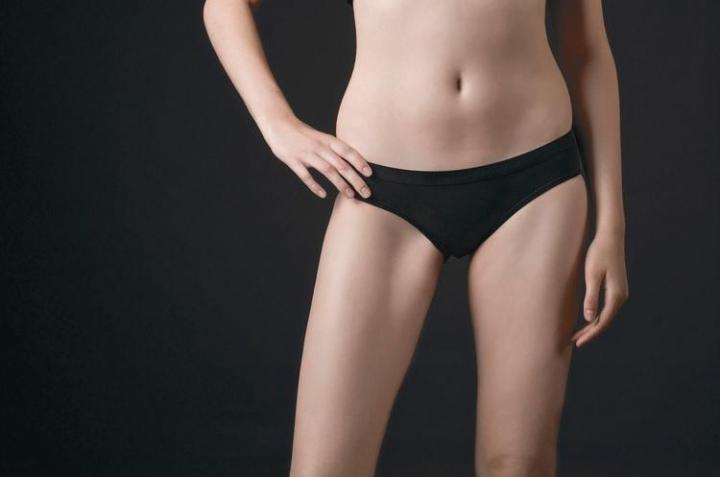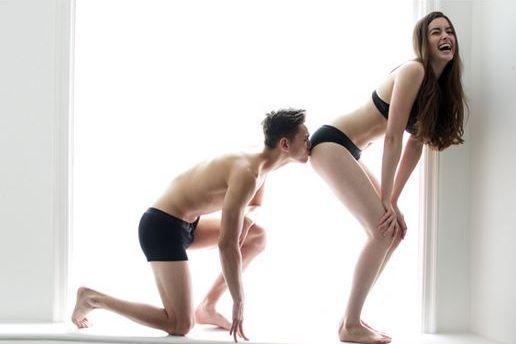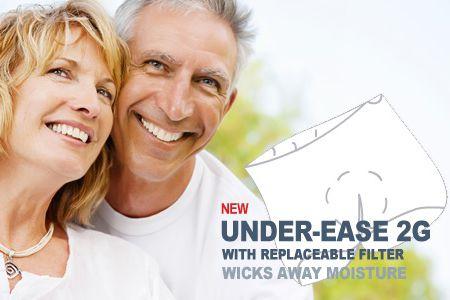
Shreddies

The name says it all. They were designed with farts in mind. The fabric used to make them has activated carbon cloth — “Zorflex,” it sounds like the name of a villain in the Bizarro world — in between two layers of modal jersey. As we all know, carbon is a common filtering material, for gases, as well as for that Brita pitcher in your fridge. According to Shreddies, it’s even been fart-tested by De Montfort University, and research proving the effectiveness of the fart-filtration was published in The American Journal of Gastroenterology, in case you want some light reading.
Shreddies has both men and ladies lines, because everyone needs it even though no one likes to admit it. They’re simple boxer-briefs (hipster, or support) for men, and briefs or high-waisters for women. Colors are basic: black, white, and nude for women; and black, white, and gray for the hipsters.
Let’s hope no one you know needs these, but they also have a line of incontinence underwear. It’s not quite as flattering as the stink-proof line, but it does the job. Depending on where you live, ordering Shreddies may have a downside since they’re based in the U.K. Postage to the U.S. will run you anywhere from six to $12.
Modibodi

An Australian based company, your butt deserves the best even if your underwear has to travel around the world to get to you. They focus on moisture wicking and Modibodi has several different lines of women’s underwear: classic, curvy, active, and “sensual” (which means is has a lace border), and maternity. Each type has moisture-wicking and leak-proof options. They also do bras: the classic comfort sports bra and the leak-proof maternity breastfeeding singlet, so nursing moms don’t have to wear nursing pads.
Modibodi’s fabrics are the secret to the moisture wicking properties of this under-gear. Their lines are mixed between three types of jersey: Merino Perform wool, Bamboo, and nylon, all of which are faster to dry than cotton. The bamboo jersey is naturally antibacterial, and it’s the bacteria that make the smell, plus it’s buttery soft besides. Both the bamboo and the wool are more moisture-wicking than cotton, so great for camping situations where a dryer isn’t nearby. As for the wool, it’s washable and it’s stain-resistant, so screw Aunt Flo. Modibodi isn’t flat-out organic, but their bamboo and Merino wool are eco-friendly. The nylon is the breathable, non-pilling kind, thank goodness.
Duluth Trading Company
You can cover yourself in Duluth clothing, from crusher hats to work boots. In their extensive collection they have Buck Naked antimicrobial underwear and shirts for men and women that keep the stink down and dry fast, and some hilarious commercials to make their point. The undies are a nylon-spandex knit with flattened seams and extra elastic. The Buck Naked series also includes T-shirts that keep the stink down, so you can wear a stink-free, sweat-wicking outfit. They have the most variety of specialized anti-gross gear by far, but don’t come to Duluth looking for maternity wear — that’s not really their area of expertise.
However, Duluth does offer cooling gear, the Armachillo collection, to keep smelly sweat from ever becoming an issue. Armadillo has everything from long-sleeve button-downs to neck gaiters to women’s shorts, and of course it includes men’s underwear. The fabric is also a nylon-spandex blend; the secret is it’s embedded with microscopic jade, so it feels cool to the touch.
Under-Ease

First conceived for people with digestive issues whose farts are deadly, Under-Ease has a cute backstory that began with the husband and wife team and a television interview in 2001, and their appearance on Shark Tank back in 2009. Their designs have even less sex-appeal than the entire idea of sweaty butt-cracks and leaky bladders. Made of a soft but air-tight polyurethane-coated nylon fabric, they have a literal “exit hole” over a pocket strategically placed to filter farts through a multi-layered removable filter. The filter itself is made of wool felt, fiberglass wool, nonwoven polypropylene and spun glass around an activated carbon center. There are only two designs, one for men and one for women. Both look like space suit liners, and their marketing is definitely aimed at the older crowd, and those who suffer from serious ailments, like Crohn’s disease or inflammatory bowel syndrome.


